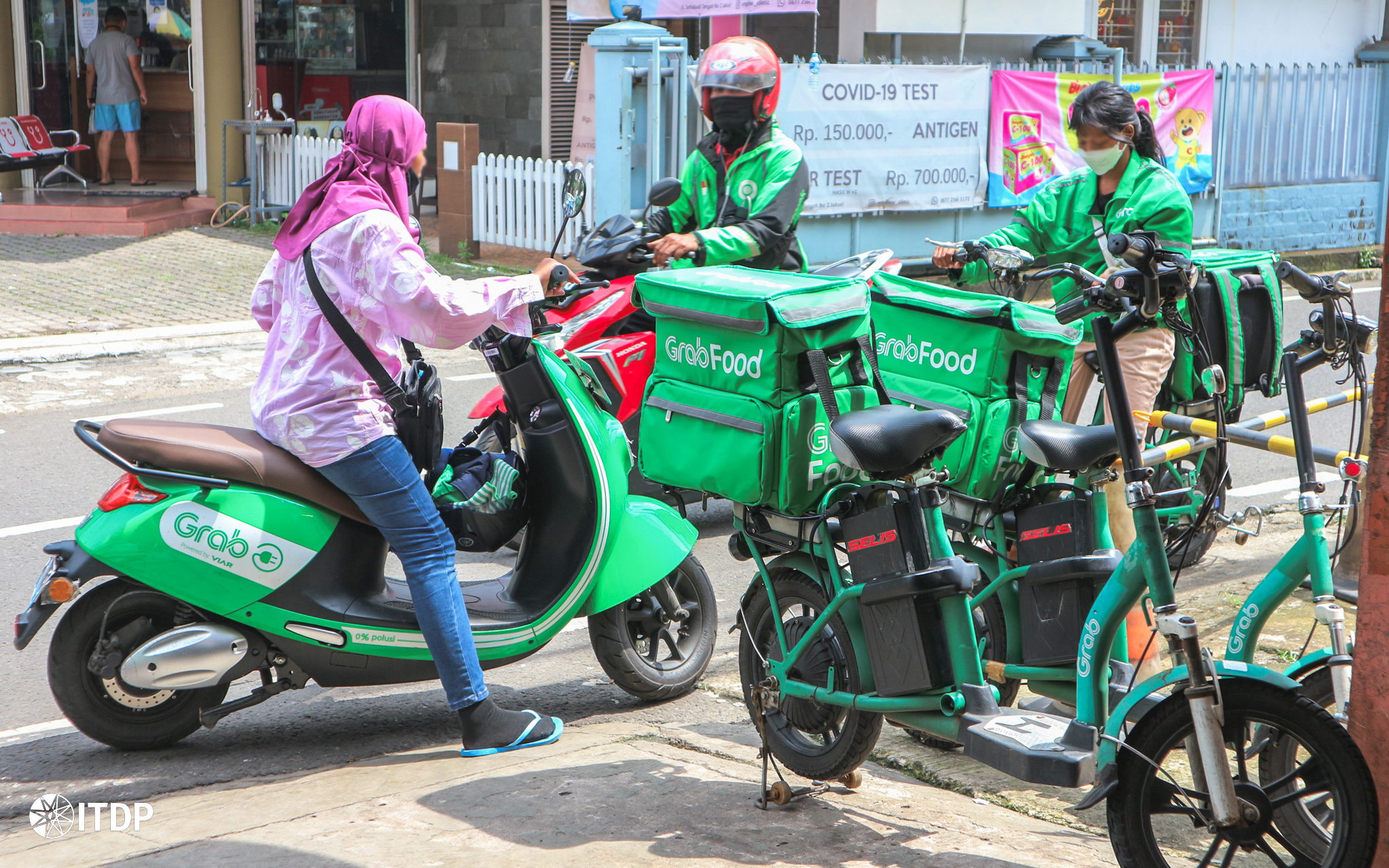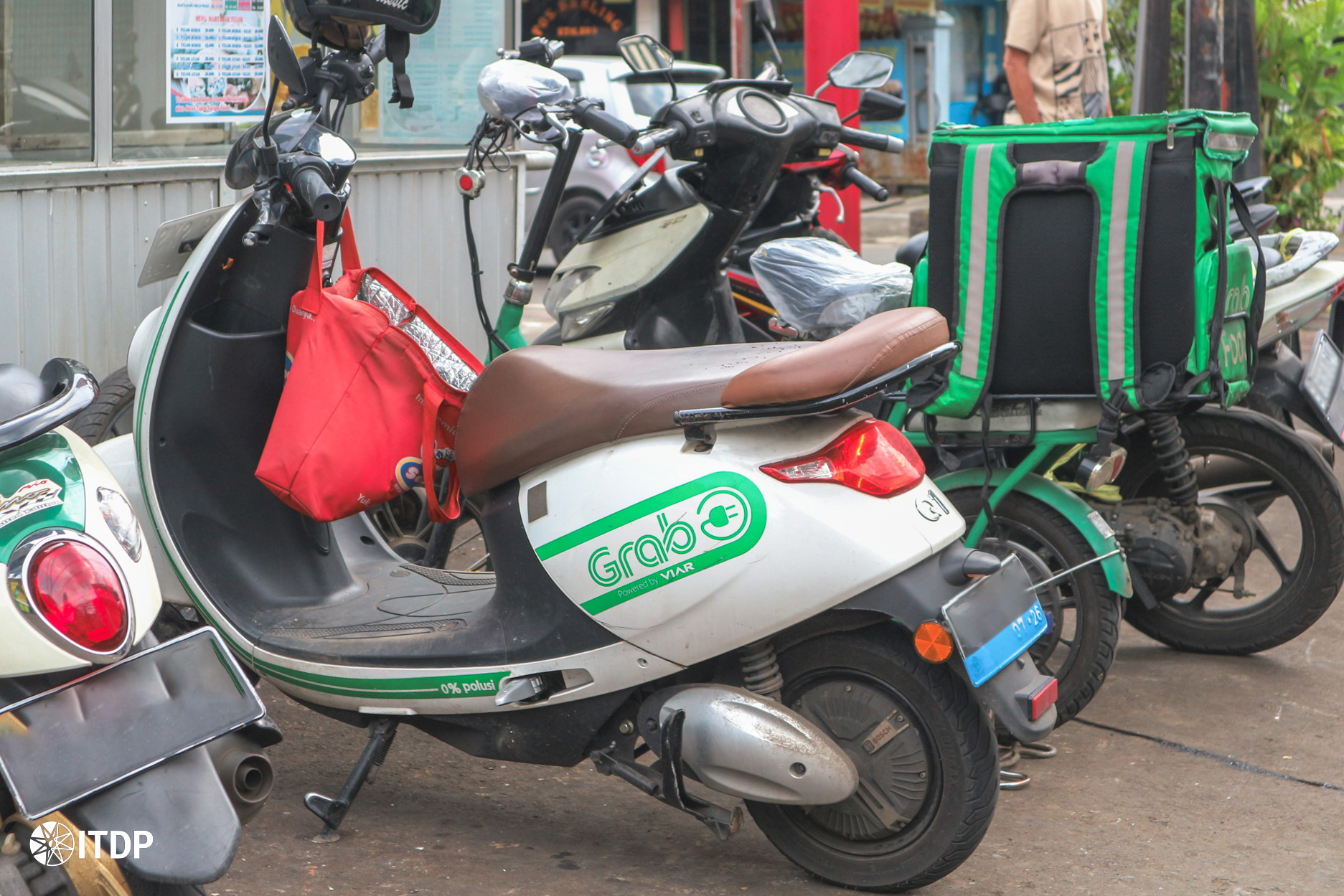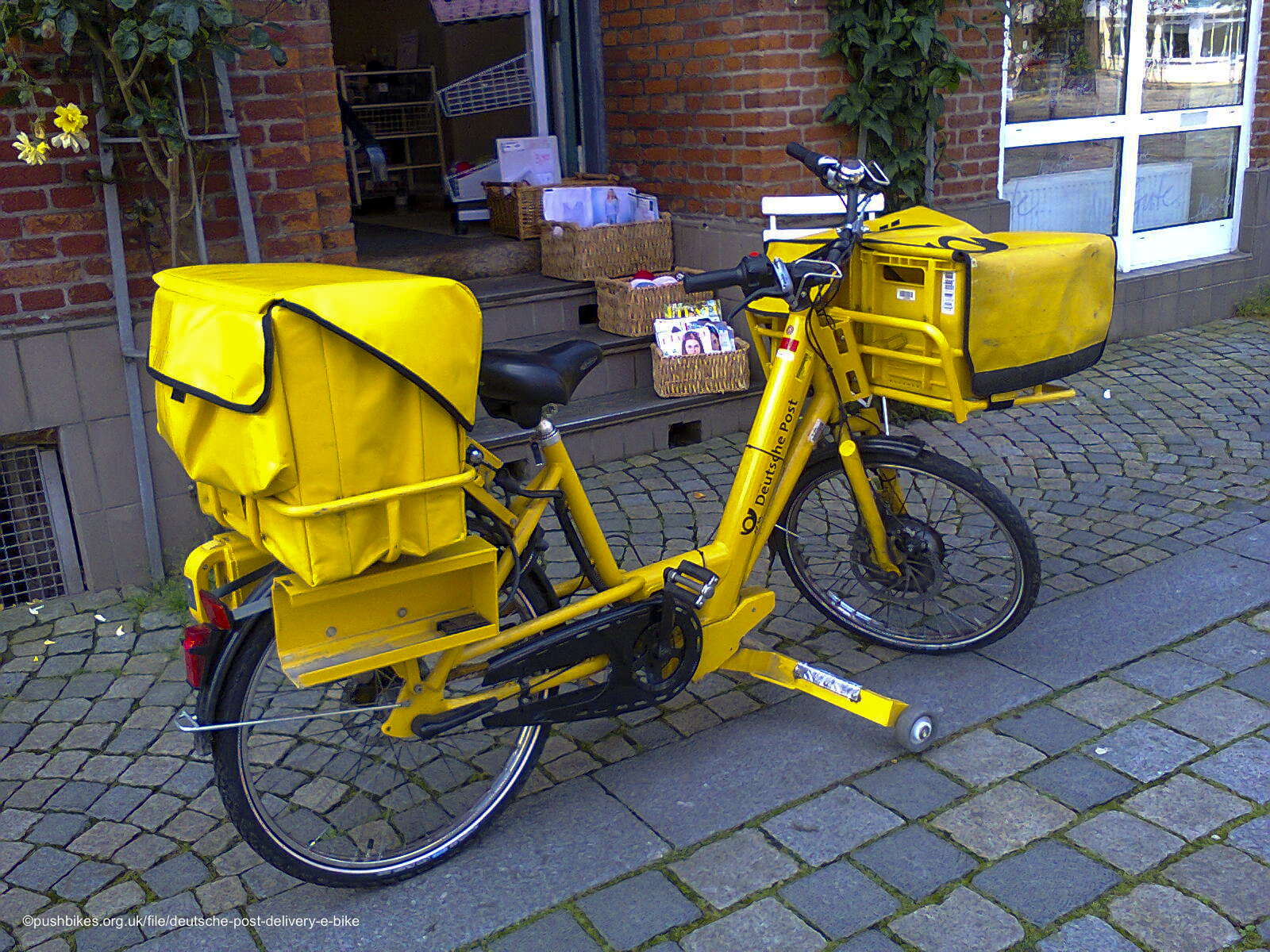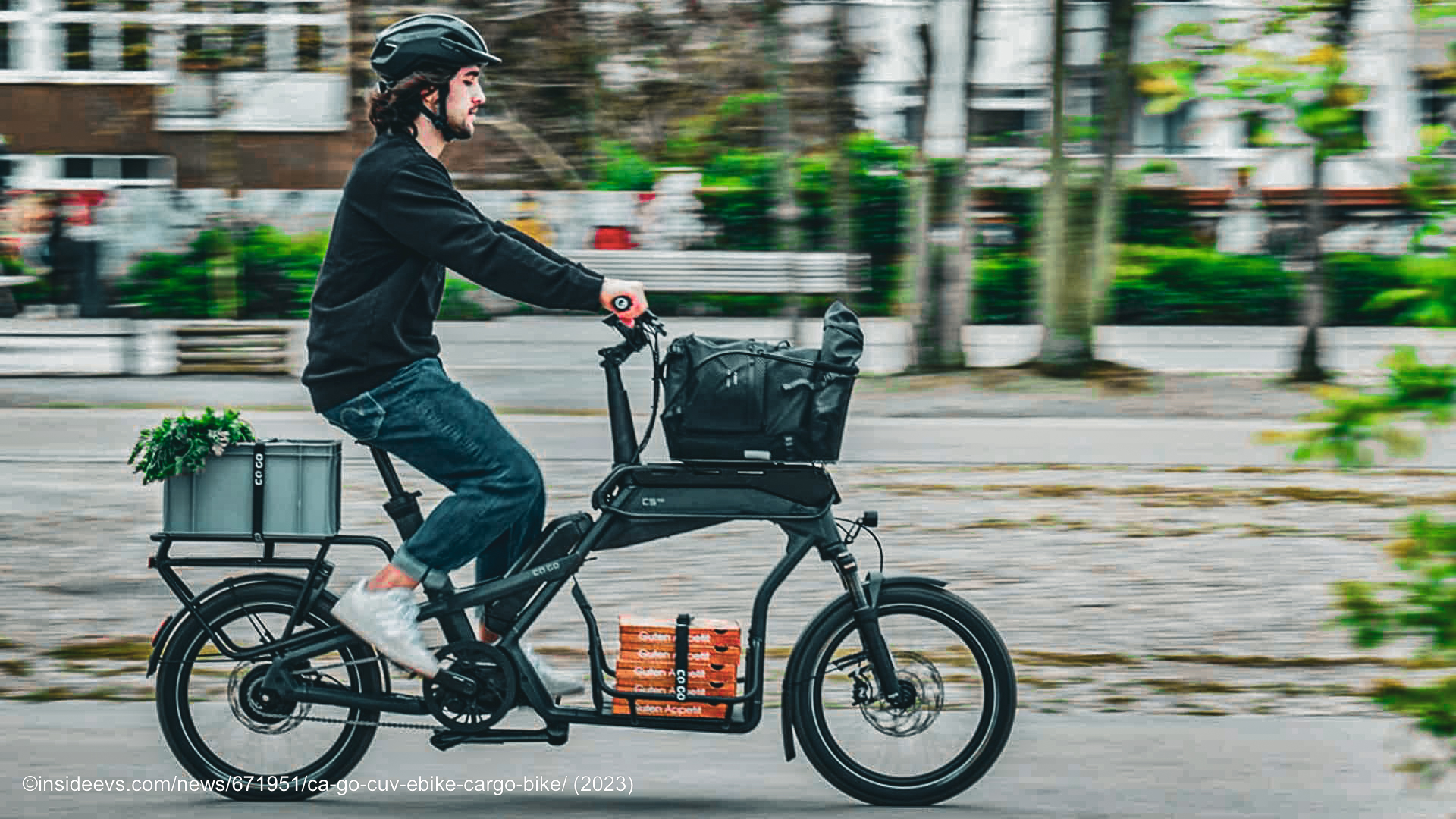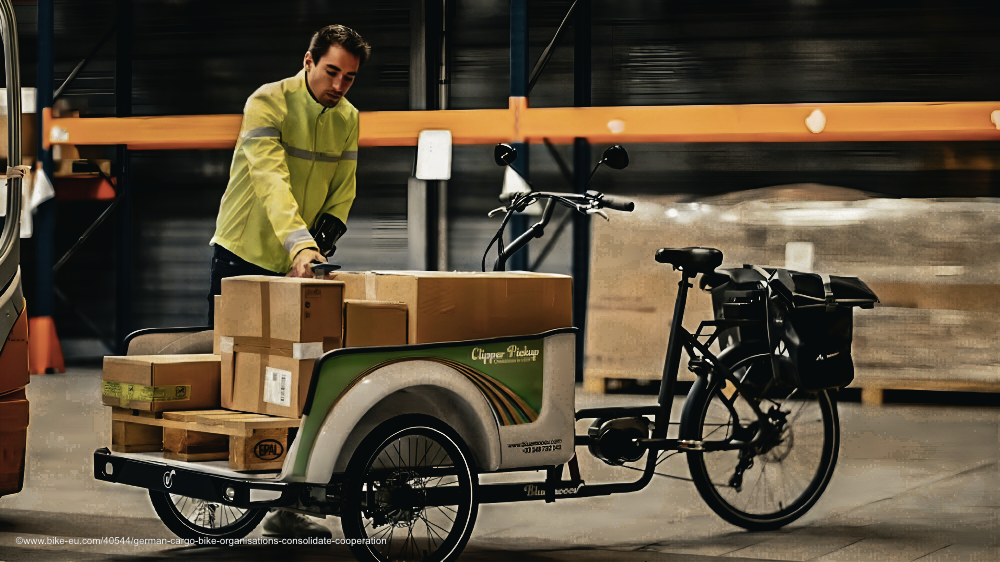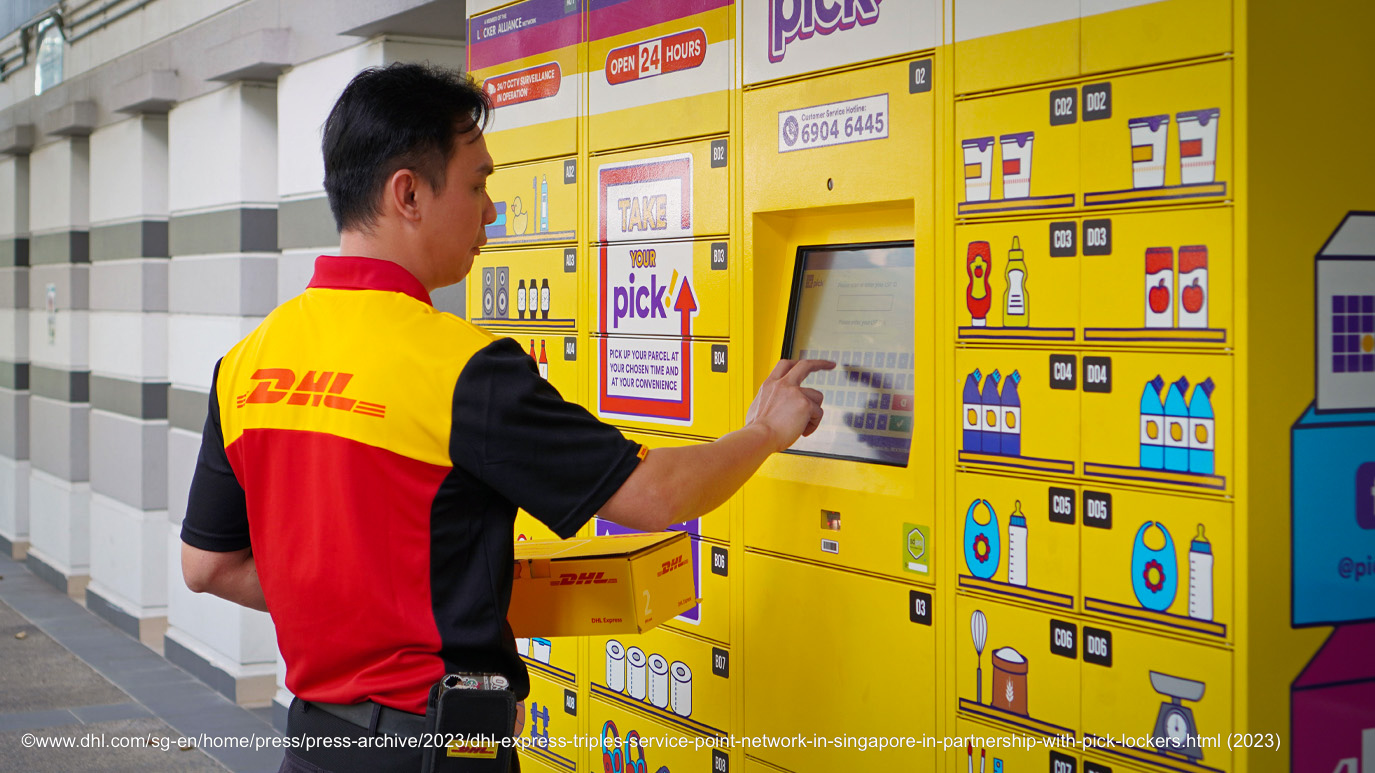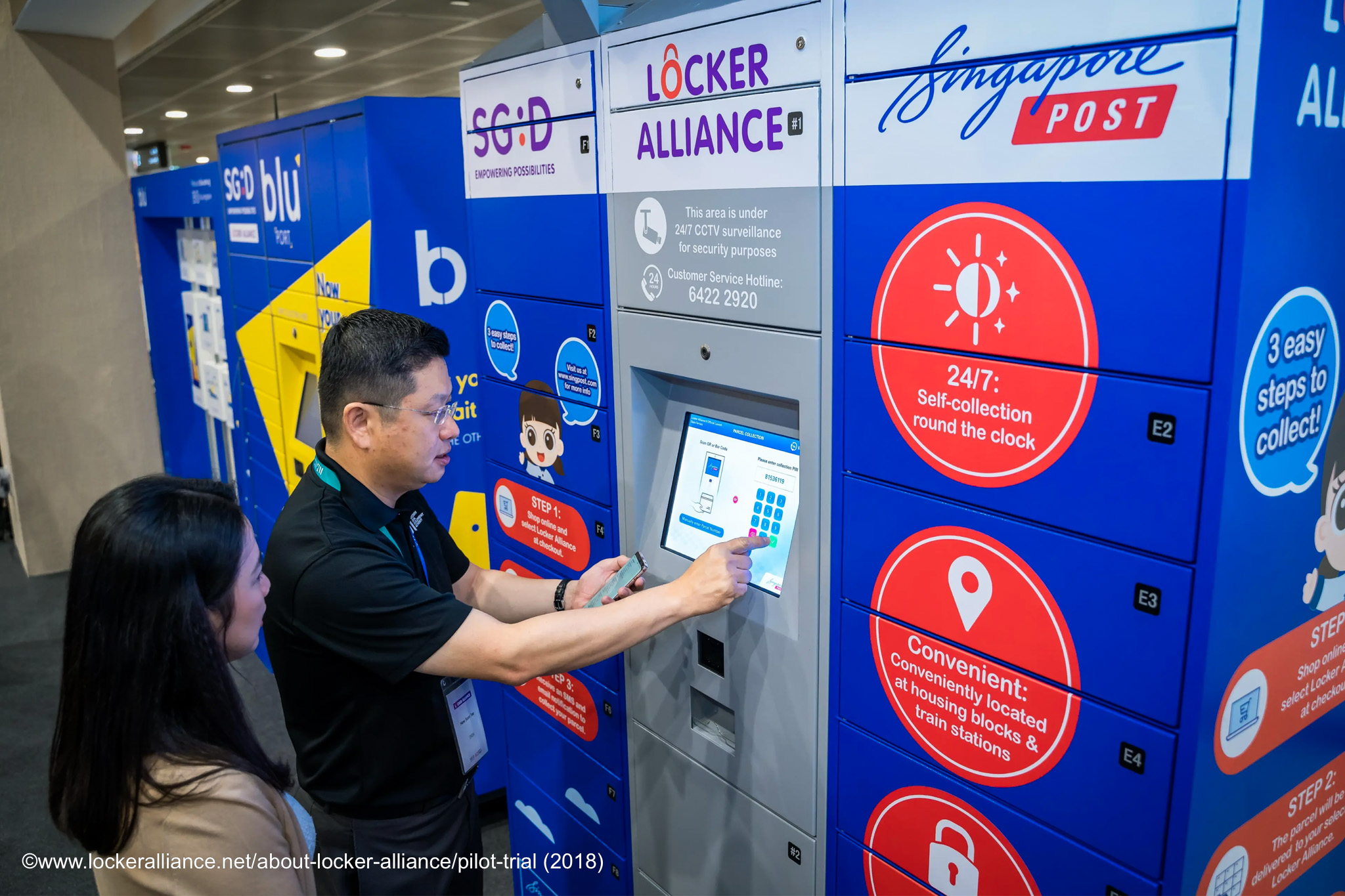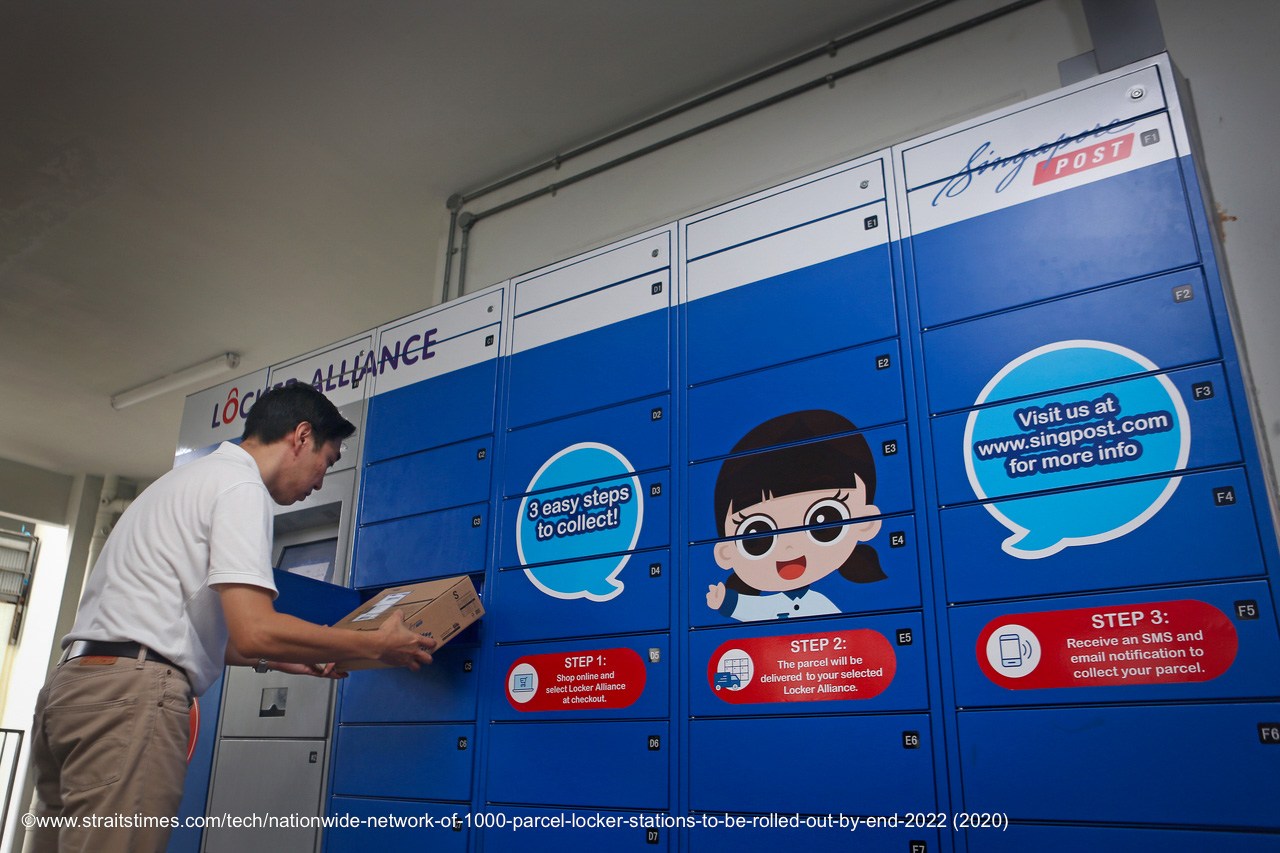October 07, 2025
The Story Behind Your Package
By Anggie Aulia Hapsari, Program Development Associate ITDP Indonesia
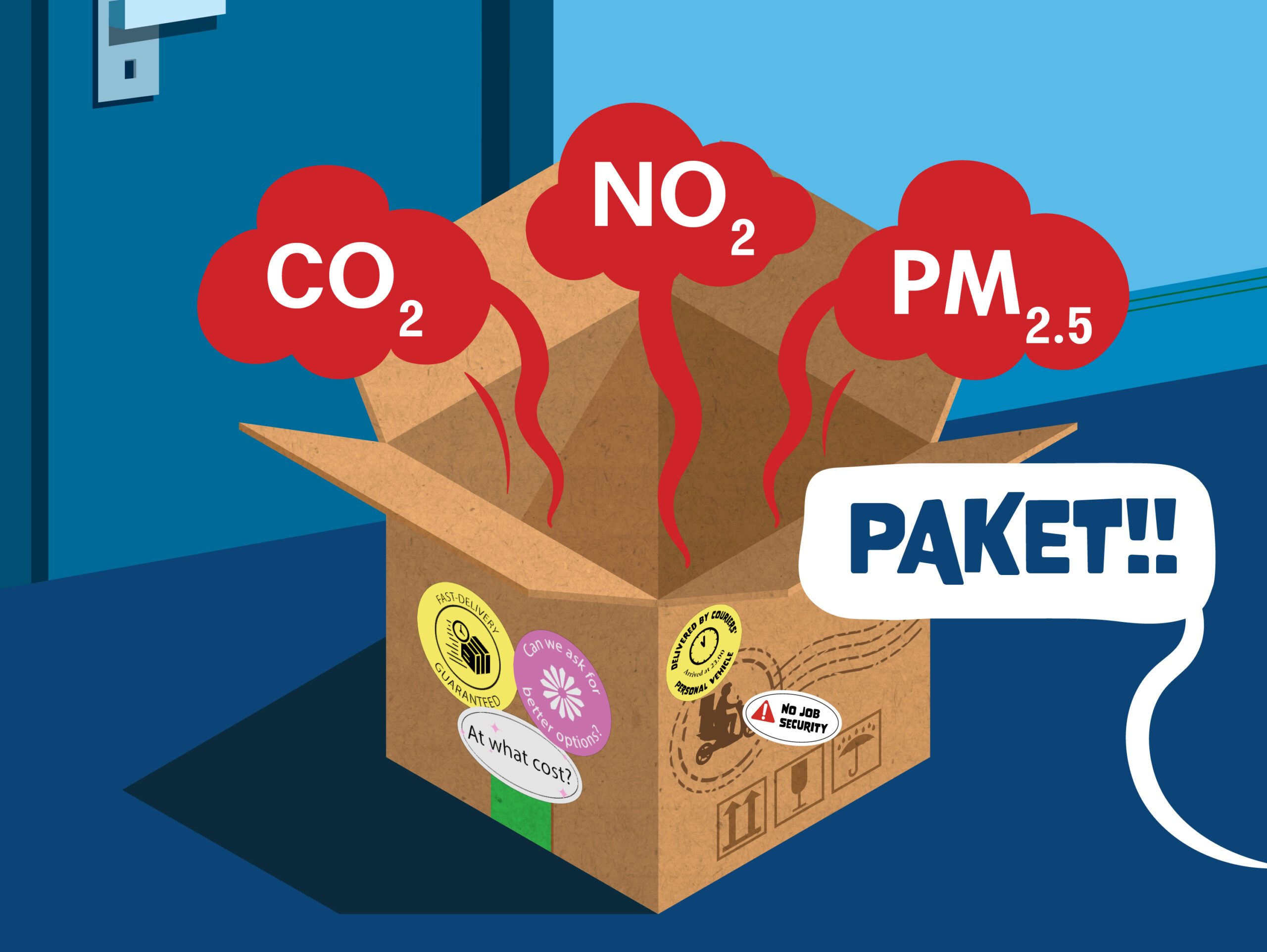
How do you usually shop these days? Just open the app on your phone, select a product, and wait a moment. Within hours or days, you’ll hear a knock on the door and the cheerful voice calling out, “PACKAGE…!” Yes, online shopping is now that easy. However, behind all this convenience carries underlying “costs” that often go unrecognized.
Let’s start by tracing how the packages that arrive at our doorsteps are delivered.
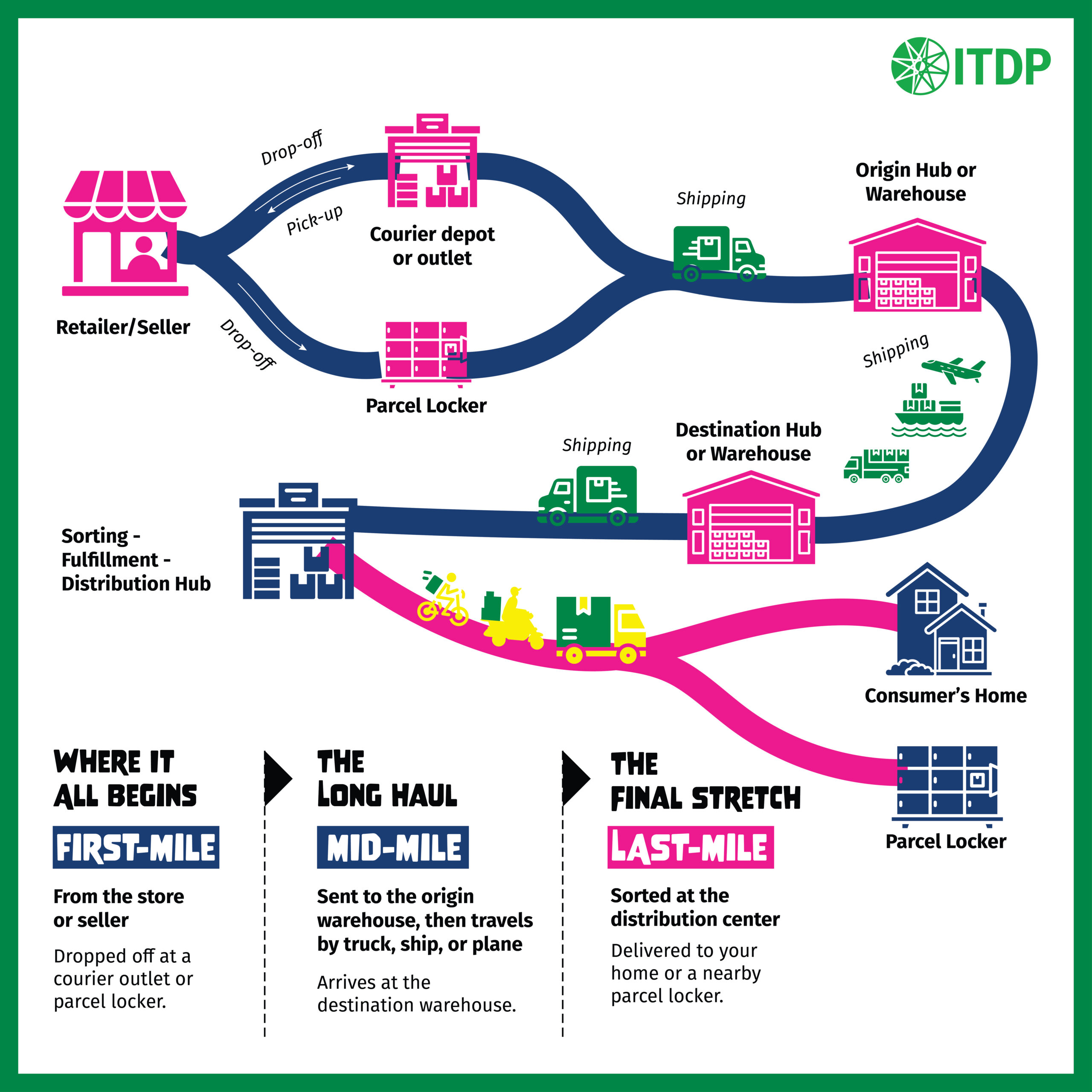
In the process, the most challenging stage is known as Last-Mile Delivery (LMD), which is the final journey from the distribution hub to the consumer’s address. Although the delivery distance is relatively short compared to First-Mile and Mid-Mile, this stage is the most expensive and complex, accounting for 53% of total logistics costs. This is because couriers have to deliver thousands of packages to different locations under tight deadlines.
In Indonesia, couriers travel 60–80 kilometers a day just to complete last-mile deliveries, often navigating heavy traffic, urban air pollution, and the rising demand for instant or same-day services among urban consumers.
To keep up with these demands, logistics and delivery companies generally adopt two types of labor systems. The first employs full-time couriers with company-provided vehicles, where most operational costs and risks are covered by the company. The second involves couriers who use their own vehicles under a partnership scheme.
In Indonesia, the latter—often referred to as the gig economy—is the most common model used by delivery services and digital platforms. However, this model has raised employment challenges, as couriers are responsible for nearly all operational expenses such as fuel, maintenance, and accident risks. They also face unstable earnings and constantly shifting platform algorithms.
Urban Logistics and the Dependence on Motorcycles
Naturally, the vehicle best suited to meet these demands is the motorcycle, valued for its practicality. Motorcycles form the backbone of last-mile delivery (LMD) services across Southeast Asia, including Indonesia. Around 60% of delivery fleets rely on motorcycles, as they are seen as the most efficient, affordable, and agile option—able to navigate narrow streets in densely populated areas. This allows couriers to deliver more packages in less time, making motorcycles a practical solution for the logistics industry.
However, the dominance of fossil-fueled motorcycles also comes with severe environmental consequences. In Jakarta, for example, a study by Systemiq1 (2025) found that the transportation sector is the most significant contributor to air pollution. In 2023, motorcycles accounted for 75% of all vehicles, producing a total of 42.72 million kg CO₂e in carbon emissions (Indef, 2023)2. Multiply that by the millions of motorcycle deliveries happening every day in other major cities like Surabaya, Medan, and Makassar, the contribution of the LMD sector to air pollution and carbon emissions becomes highly significant.
In other words, even though motorcycles make deliveries faster and more efficient, every package comes with an environmental cost—worsening air quality, global warming, and affecting people’s health.
Green Innovations in the Logistics Industry
Currently, several logistics companies in Indonesia are beginning to show their commitment to environmental concerns through sustainability reports or Environmental, Social, and Governance (ESG) disclosures, which include emission reduction targets. They are also driving initiatives to make LMD cleaner and more sustainable. Some steps being implemented include:
- Fleet electrification: using electric motorcycles or light electric vehicles for deliveries.
- Bike-based deliveries, designed for dense urban areas with short delivery distances.
- Parcel lockers and pick-up points to reduce the need for door-to-door deliveries.
- Route optimization utilizing digital technology to enhance the efficiency of courier trips and reduce fuel consumption.
However, the transition toward low-emission LMD is not easy. Many companies have piloted deliveries using electric motorcycles or cargo bikes but have struggled to continue—or even stopped—due to cost issues, battery durability concerns, limited charging infrastructure, and low cargo capacity. Furthermore, because most delivery vehicles are owned by couriers, incentives such as loans, daily rentals, or even government subsidies (e.g., the IDR 7 million subsidy for purchasing new e-motorcycles) have not been enough to make such initiatives sustainable.
Policy and Incentives: Keys to Accelerating Green Logistics
The transition toward green logistics will progress faster with clear regulations and incentives. In Europe, for instance, the Clean Vehicles Directive3 requires public procurement to use low-emission vehicles, including for postal and parcel services. This regulation provides a legal framework that pushes logistics companies to accelerate fleet electrification and adopt other low-emission vehicles, such as bicycles.
In Germany, the government provides a subsidy covering 25% of the purchase price of electric cargo bikes (e-cargo bikes), with a maximum of €3,500 per unit. Since the program began in March 2021, more than 10,000 electric cargo bikes and commercial trailers have benefited from this incentive. This policy demonstrates how clear financial incentives can accelerate the adoption of low-emission delivery vehicles while providing logistics companies with the certainty they need to make long-term investments.
In Indonesia, the government has launched a program to accelerate the adoption of Battery Electric Vehicles (BEVs) through Presidential Regulation No. 55/2019, later updated by No. 79/2023. However, this policy does not explicitly address the logistics sector, including postal, courier, and parcel services. In mid-2025, the Ministry of Communication and Digital Affairs issued Ministerial Regulation No. 8/2025 on Commercial Postal Services, emphasizing the use of green logistics technology, including low-emission transport modes.
In Southeast Asia, Singapore has developed a national parcel locker network4 regulated under the Postal Services Act. These lockers are installed in residential areas, transit stations, and public spaces, ensuring that residents can access them within a 250-meter or 5-minute walking radius. This policy reduces the need for couriers to deliver packages door to door, making the system more efficient, energy-saving, and low-emission. Indonesia, in fact, has strong potential to adopt a similar approach. In Jakarta, the concepts of Transit Oriented Development (TOD) and Low Emission Zone (LEZ) have already been introduced, such as in the Kota Tua area. Parcel lockers could be placed near transit stations or within LEZs, encouraging consumers to pick up packages while carrying out their daily activities. The biggest challenge, however, lies in the lack of pedestrian infrastructure in many areas, making parcel locker integration less effective. Therefore, the success of green logistics in Indonesia requires a combination of urban policy, infrastructure support, and strong collaboration with logistics companies and communities.
The shift towards low-carbon logistics must be supported by clear policies, medium- and long-term targets, and concrete roadmaps to ensure it does not stop at pilot projects. Some necessary steps include:
- Green logistics transition roadmap with medium- and long-term targets.
- Fiscal incentives and regulations to encourage logistics companies to adopt low-carbon fleets.
- Subsidies for electric and low-carbon fleets, such as price discounts, tax incentives, or vehicle trade-in schemes.
- Expansion of green infrastructure, including charging stations, battery swap facilities in major cities, as well as pedestrian facilities and bike lanes.
- Inclusive financing schemes that take couriers into consideration.
- Research and business model evaluations to identify the most effective financing schemes that can make the transition more affordable.
The future of LMD in Indonesia will be determined by the success of the transition to low-emission fleets. Government incentives and urban policies that support green logistics will play a crucial role in facilitating this transition.
Play your part in advancing green logistics—fill out the survey: https://bit.ly/itdp-surveilogistik2025.
References:
- SYSTEMIQ. (2025). Better Air, Better Indonesia: A Pathway Towards Cleaner Air in Indonesia. SYSTEMIQ. Retrieved from https://www.systemiq.earth/resource-category/better-air-better-indonesia/
- Ferdiansyah, B. (2023). Indef: Besarnya emisi karbon momentum menuju transportasi bersih. Antara. Retrieved from https://www.antaranews.com/berita/3684312/indef-besarnya-emisi-karbon-momentum-menuju-transportasi-bersih
- European Commission. (n.d.). Clean Vehicles Directive. Retrieved from https://transport.ec.europa.eu/transport-themes/clean-transport/clean-and-energy-efficient-vehicles/clean-vehicles-directive_en
- Infocomm Media Development Authority. (2021). Nationwide Parcel Locker Network Launched. Retrieved from https://www.imda.gov.sg/resources/press-releases-factsheets-and-speeches/press-releases/2021/nationwide-parcel-locker-network-launched

